From extinct to tourism boom: Elk thrive atop reclaimed coal mines in Eastern Kentucky
Thirty years ago, spotting one of the goliath-size, deer-like creatures in the Eastern Kentucky mountains would have seemed almost mystical.
Elk hadn't roamed those hills in more than a century.
But just after dawn on an unseasonably warm winter day in January, we parked a tour van so close to a majestic female elk that she could probably smell the exhaust. She didn’t scurry or flee but rather appeared comfortable. Her eyes looked curious, and her muscular body seemed at ease.
Today, a herd of more than 11,000 rocky mountain elk thrives atop reclaimed coal mines in Eastern Kentucky, but that wasn’t the case just three decades ago. The herd's close cousins, the eastern elk, were hunted to extinction by early European settlers. But now, in an unsuspected way, these animals help aid an economy that’s withered alongside Eastern Kentucky’s coal industry. There are more than 4 million acres of reclaimed coal mines across 16 counties that serve as home to these larger-than-life creatures and their reintroduction to the region took about six years.
The elk tour where I met this breathtaking female was one, very small part of it. Samantha Johnson, the former executive director of Prestonsburg Tourism, described the impact of elk as a boost to motor-coach tour sales, which has an average economic impact of $12,000 per day in the community. Having the herd in the mountains also provides a lift in the winter season, which was historically been the slower season for tourism in the area.
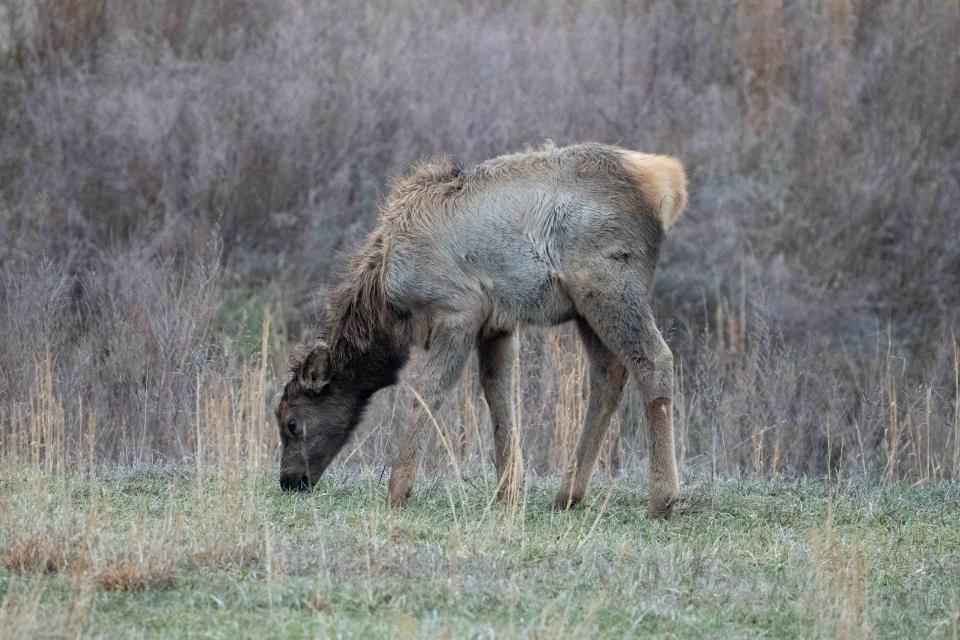
About an hour earlier, at 6:30 a.m., I boarded a van at Jenny Wiley State Resort Park with naturalist Nathan Harless. Elk are somewhat active in the park, he explained. Hikers and bikers have spotted them while traveling the 13 miles of trail systems. People fishing have seen them from boats, and visitors in the lodge often hear their throaty, scream-like mating calls from across the lake.
There’s a place in the Kentucky Wildlands, though, where Harless swears the elk are more active than anywhere else in the commonwealth.
“They just feel safe here, and a lot of times we can just drive right up,” he said
And to find the best view of them, we needed to get there before dawn.
How Kentucky elk went from extinction to a herd 11,000 strong
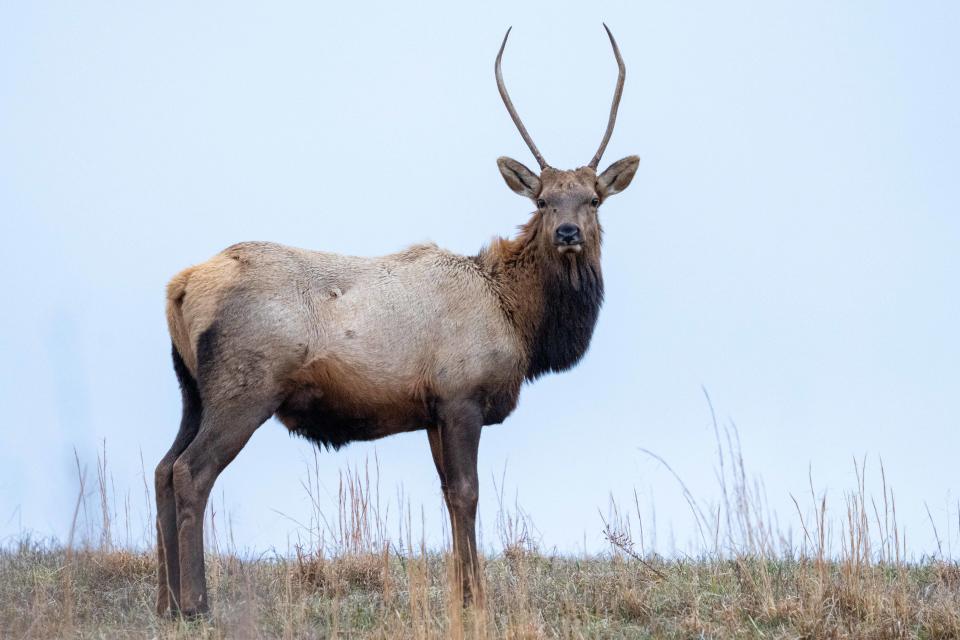
Harless drove us around the perimeter of Dewey Lake underneath the pitch-black sky. Throughout the 25-minute trip, he kindly entertained my elementary questions about the lake, the elk in the mountains, the people who hunt them, and the reclaimed coal mines where they roam.
Newspaper clippings from 1997 estimated more than 3,000 spectators came to watch a group of five female rocky mountain elk and calves climb over a hill in a single file and disappear into the wild. Schoolchildren, hunters, environmentalists, nature photographers, and officials alike turned out to welcome the elk back to Kentucky for the first time since the 1850s.
To bring the elk back to the region, conservationists needed to identify 100,000 acres of viable land for the eastern elk’s closely related cousin, the rocky mountain elk. The reclaimed surface mines where we were headed provide so much more than that, Harless explained.
You don’t necessarily need to take a formal tour to find the elk, and booking one like I was on doesn’t necessarily mean you’ll see them. But the odds are pretty good.
“I’ve got a good feeling they are out, but they’re wild, free-ranging animals,” Harless told me. “They’re going to go wherever they want to go.”
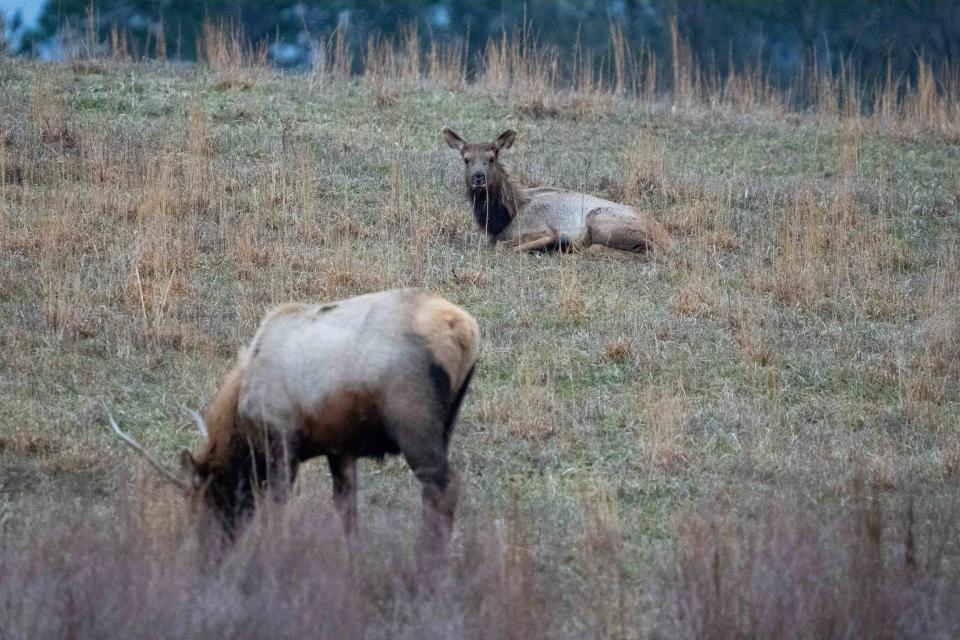
Harless jokes that he can’t find the ketchup bottle in his refrigerator, but he can spot the difference between an elk and a deer from a distance even in low light.
Until they’re standing side by side, Harless explained, it can be hard to tell just how much bigger the elk are.
Or of course, until they’re right in front of you.
In those moments, the elk’s undeniably sweet, musky smell seeps into the bus. Sometimes tour guests will scream with delight when they spot their first elk. Others demand that Harless pulls over. He’s hosted tours before where as many as 70 elk are right along the roadside in the first minutes.
And he’s given plenty of tours like the one I was taking, where we had to search a little harder for them.
“There they are,” he told me, as he pulled the van over to the side of the road.
I stared out at the dark hillside, unsure of what I was looking at.
Then he handed me a pair of binoculars, and sure enough, through the lenses I could see about two dozen females lounging on the hillside blending into the background as though they were part of the mountain itself.
Could elk hunting revitalize Eastern Kentucky?
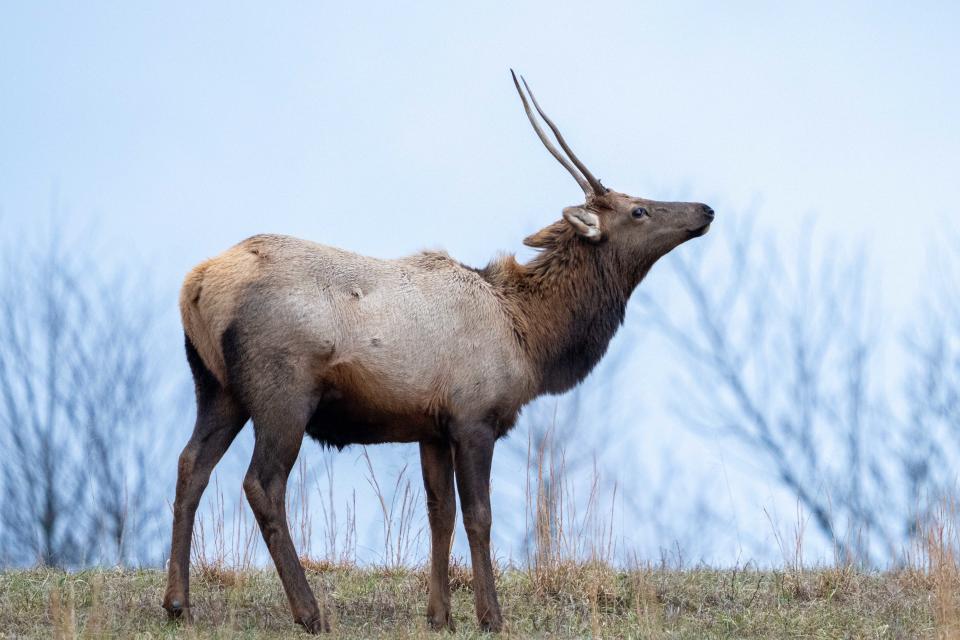
This, Harless explained, is a little more relaxed than what we would have seen in September and October during mating season. On those tours, it’s not uncommon to see males, with their massive four-foot antlers rolling around in ditches, or even dashing across the roads in a fury trying to impress the females.
By this point of the season, though, the males have retired to what he called a “bachelor group” and the females, like the ones in front of us, stayed off to themselves with their young.
This group sat more than 60 yards away, and so we started the van again hoping to find elk closer to the road. As we drove, we passed Big Sandy Regional Airport, a federal prison, an apple orchard, and Czar Coal Corporation. Years before this area had been slated for an industrial park, but as coal left the region, so did plans to develop it.
The reclaimed coal mine sits too far from any interstate to attract businesses, Harless explained, and now the leftover building shells give it a strange, industrial, ghost town feel. He can point to the building that once manufactured the truck beds that hauled coal, but that shuttered when there wasn’t enough coal to haul. Another a little further back made mining equipment. It's gone now, too.
But even as far away from the interstate as this industrial desert sits, on most evenings, people drive slowly on this road, hoping to see the elk. The draw goes much deeper than spectators. It only took a handful of years for the rocky mountain elk population to grow enough to safely hunt it, and with it, Harless said, a whole industry has popped around it.
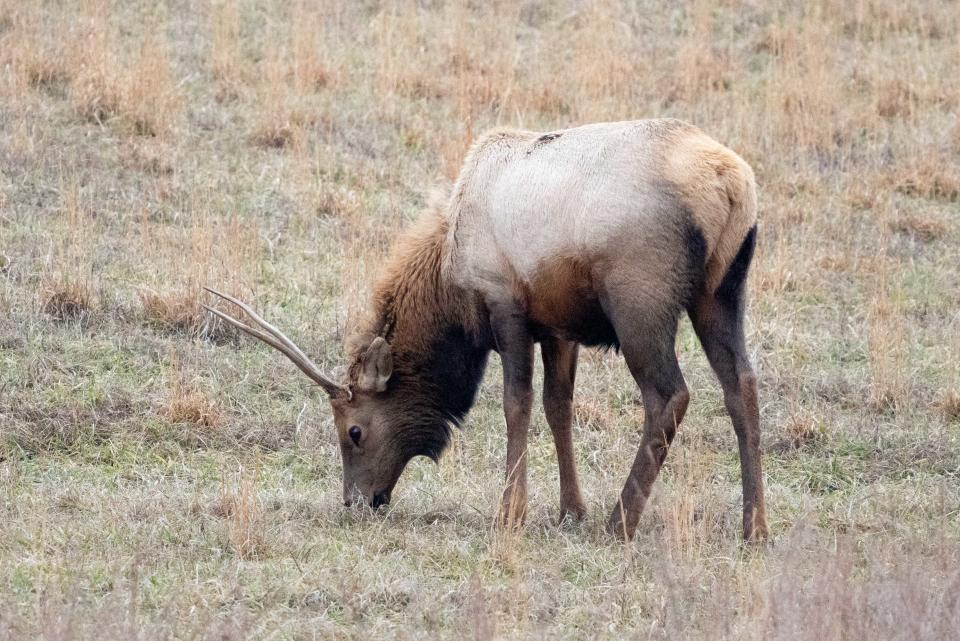
Hunters, who are lucky enough to win a tag from the Kentucky Department of Fish and Wildlife, will often spend thousands of dollars in the region to hunt a single elk. A serious hunter would spend upward of $5,000 to hire a local guide. Meanwhile, these hunting groups stay in the area for days eating at restaurants, sleeping in hotels, and pumping dollars into the economy.
“The reason they call it a lottery is it's like winning the lottery to get one of those tags if you're a hunter,” Harless explained.
Harless hit that jackpot once, but it was for a female. Males have antlers on the crowns of their heads that can grow more than twice the size of what you’d see on a typical deer. That’s where the real prize is, but hunters don’t choose whether they’re after a male or a female or even where in the mountains they’re allowed to hunt.
The lottery decides all of that, and arguably, for good reason. History could certainly repeat itself if hunters had unfettered access to grassy, flat mountaintops where the elk roam.
'Tourism is the future of Eastern Kentucky'
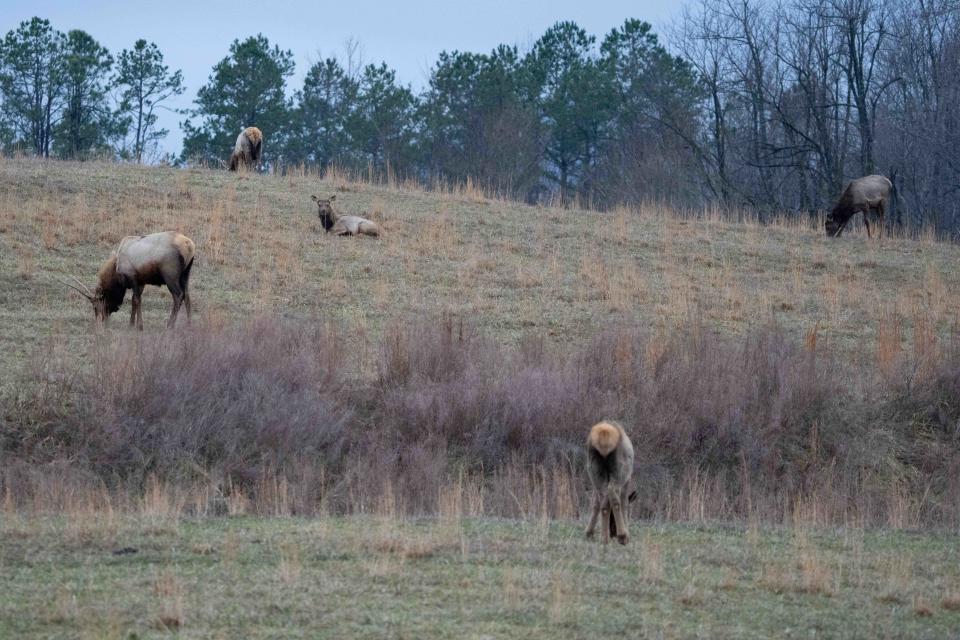
As light broke on top of the sleepy mountain, I searched the pasture for a grown bull with a four-foot crown of antlers atop his head like the ones Harless had told us about, but none appeared.
We circled back to that first group of females, and now that we had the early morning light in the sky, we could see two young bulls in the mix. Their antlers weren’t fully grown, but two smaller points stuck out of each side of their heads.
But Harless had a backup plan.
There was one place on the mountaintop that not everyone had access to — and he was certain there was at least one crown of antlers, there.
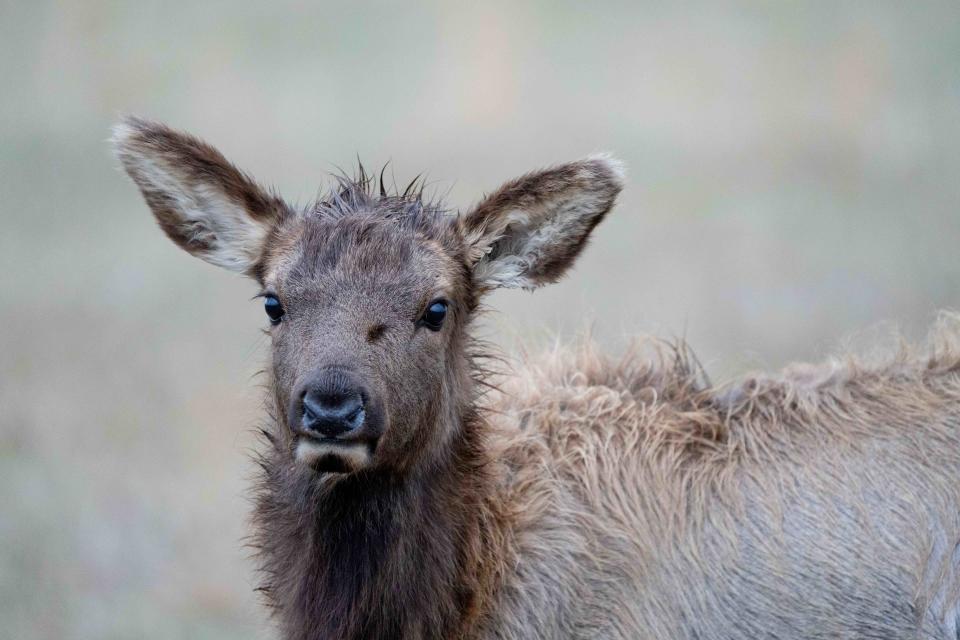
The security gate outside of Big Sandy Regional Airport opened, and Gary Cox, the airport director, greeted us grasping onto a set of antlers the size of a conventional oven. A few years back, a male elk ended up injured on the airport grounds and it didn’t survive. Cox has a permit to keep its antlers, and he uses them to educate tourists about the elk.
But perhaps, what’s even more jaw-dropping than the racks are the stories Cox tells. He sees plenty of people fly into the airport just to have a hamburger at the neighboring Cloud 9 Cafe, take in the stunning mountain view, and see the elk for themselves.
And typically, the elk don’t make it that hard.
He pulled out a stack of photos, and one showed an elk sitting comfortably on the restaurant’s porch.
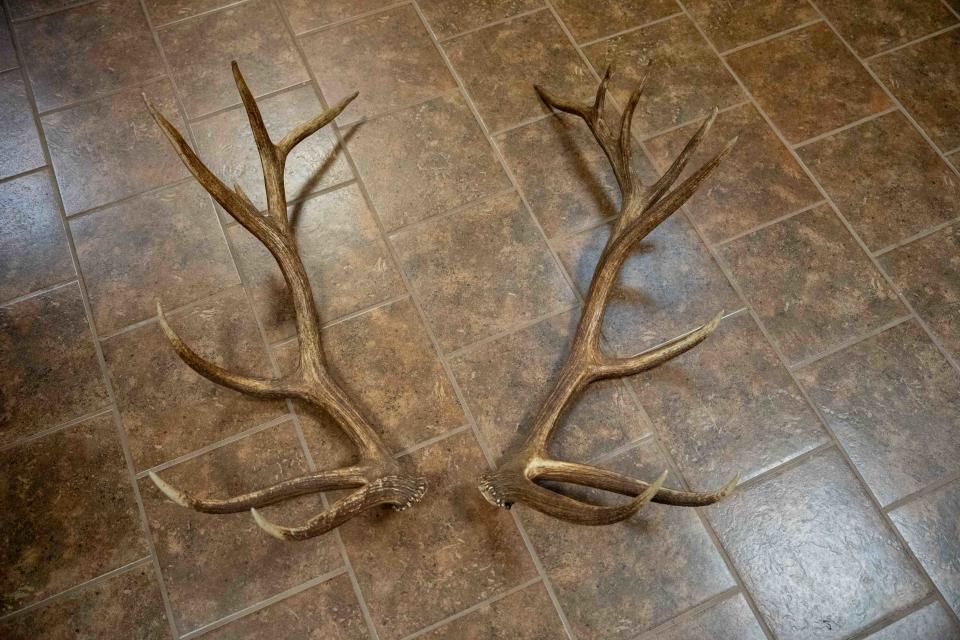
Then Cox reached for his phone and showed me a social media post picturing 14 elk lined outside of Cloud 9 Café. He’d written a caption joking about how the restaurant already had a "waiting list" for the morning. Cox hoped they wouldn't be too disappointed the café didn't serve breakfast.
In recent years, he’s built a few small cottages near the airport grounds, and the elk have been enthusiastic about greeting his customers. Another picture showed more than a dozen scattered around that rental.
“When you stay at The Airport Cottages, sometimes the neighbors show up unexpectedly,” he told us, laughing.
Tourism, Cox says, is the future of Eastern Kentucky.
Travelers are craving an authentic experience with nature. He operates a small side-by-side tour business, too, where people traveling in can see the view from the mountaintop, hear the rustle of a creek, and explore a hollow. These reclaimed surface mines, Cox says, have the potential to become Gatlinburg without commercialization.
The stunning herds of elk are a wonderful but small part of a much bigger movement, Harless explained, as we left the airport and headed back to Jenny Wiley.
And while I never saw that full-grown, majestic bull as I’d hoped, I still left the mountains with a sense of wonder.
Nearly 200 years after settlers hunted the eastern elk to extinction, their cousins live in a calm, peaceful oasis atop this reclaimed coal mine.
And this isn't mystical at all.
These mountains are their home.
Features columnist Maggie Menderski writes about what makes Louisville, Southern Indiana and Kentucky unique, wonderful, and occasionally, a little weird. If you've got something in your family, your town or even your closet that fits that description — she wants to hear from you. Say hello at mmenderski@courier-journal.com or 502-582-4053. Follow along on Instagram @MaggieMenderski.
IF YOU GO:
WHAT: Elk viewing tours atop reclaimed coal mines in Eastern Kentucky
WHEN: September to early March.
WHERE: The tour bus leaves Jenny Wiley State Resort Park at 419 Jenny Wiley Dr. in Prestonsburg.
COST: Tours start at $30 per adult and $15 for children, but prices vary by package.
TO BOOK: To make reservations call 606-889-1790.
MORE INFO: prestonsburgky.org/adventures/elk-watching/
This article originally appeared on Louisville Courier Journal: Jenny Wiley State Resort Park Elk Tour, hunting in eastern Kentucky

